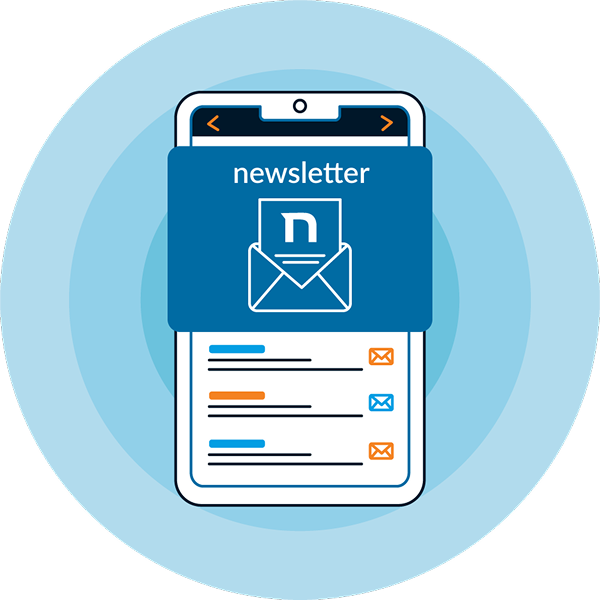In the wake of the digital revolution, there is more and more talk about the need to automate documents. However, it is important to ask: what is, after all, automation?
This word is central to the increasingly strong movement towards adopting technologies to optimize companies' operations in all sectors of the market. The idea is to reduce the manual preparation of documents as much as possible, with the aim of directing employees’ efforts to the strategic activities that generate more value for the company.
Those who want to invest in these innovations need to have a clear vision of what is meant by automation. In addition, it is also important to know what the necessary steps are to implement this technology, as well as to keep in mind the advantages and concrete impacts that can be expected on the activities of each area.
Understand more about each of these points and, in the end, see how to turn the automated preparation of documents into a routine part of your company.
What is document automation
The logic of automation is to use technology to reduce the amount of human work required to perform a given activity.
Therefore, document automation is the use of technological tools to create files of all kinds, eliminating repetitive and standardized tasks and also reducing the manual work of employees.
Main risks of manual preparation of documents
The traditional conceptions about document preparation start with someone’s task to fill out a blank sheet, whether physical or digital.
Sometimes the company has a template that can provide a basis for this activity. However, even in these cases, it is not certain whether the reference used is the most recent or the most appropriate one. There is also no visibility of changes made by collaborators to the standard text.
Therefore, this entirely manual way of preparing documents generates inefficiencies such as:
- It makes risk management impossible, since either there is no model and, therefore, there is no standardization of document content; or there is a model, but there is no visibility on eventual alterations to the standardized text;
- It takes time to prepare, since, without reference, employees are forced to build from scratch the points that they consider to be important for that type of document;
- Insecurity of employees, who are not sure about the most up-to-date content of the documents or about the extent of their powers to change it;
- It leads to failure in prioritization, since the difficulty in starting the task, can lead to other not-so-important activities being carried out before the document is prepared;
Automation is a way to remove these and other concerns, optimizing the performance of the company's areas.
How document automation works
As you've already seen, document automation uses technological tools to create all kinds of files. Putting this functionality into practice requires four main steps. See each one below:
1. Definition of a standard draft: compliance and risk management
The first step in automating documents involves getting your team together to prepare a standard template.
This file will contain the best and most up-to-date information, in addition to the necessary clauses for each specific type of document. This step is essential to ensure compliance with applicable rules and with the risk matrix established by the company.
After this elaboration and analysis phase, the document is effectively automated.
2. Document automation: creation and articulation of variables
Next, the legal engineers will access the standard draft and, together with the company, classify the information according to two main types:
- Fixed: those whose content will be repeated in all documents of that type. These are, for example, data protection and information security clauses for contracts.
- Variables: those that refer to fixed categories, but whose content changes in relation to each concrete situation. They may include, for example, the name of the requesting parties, the wording of the request, dates, and so on.
Thus, working on the standard draft, the legal engineer marks what is fixed and what is variable so that the system understands how to build the document. The differentiation between these two types of data allows standardized content to be present in all files while accommodating the variations that individualize each.
3. Elaboration of the automated document: simple and intuitive questionnaire
From the automation of the standard draft it is possible to elaborate as many documents of that type as necessary. All information classified as variables will be transformed into questions to be answered from a simple and intuitive questionnaire.
Thus, if one of the variables was, for example, the payment date of a certain installment, a box will appear on the employee's screen for him to include that specific information.
This data will be automatically placed in the document, along with those that had been classified as fixed at the time of automation. It is possible to insert this content even in the middle of sentences, preserving the wording and formatting of each topic in the file.
This generates considerable advantages, such as:
- Reduction in the complexity of tasks, as the employee will be guided in the preparation of each automated document;
- Reduction in document preparation time, as all you have to do is insert the information indicated in the questionnaire and you will have the guarantee that all of them will be used in the correct places;
- Reduction of transcription errors, since the questionnaires can be automatically integrated with other databases, internal or external, in which that information already exists;
- Guarantee that all the necessary data will be present in each document since the answer to the central questions can be marked as mandatory;
In responding to the questionnaire, all the information necessary to fill in the variables is gathered and the document is formed without any other work by the employee.
4. In addition to automation: Modifications to the final document
Even considering the division of content between fixed and variable, it is possible that there are issues that depend on a specific contextual evaluation, so they cannot be automated yet.
An example of this type of content is conditions exclusively negotiated for a particular contract. At first, they could not be anticipated in automation, because, being very circumstantial, there would be no standard to guide automation.
At this point comes the differential of document management platforms such as netLex.
In addition to including information via questionnaire, the user can also be authorized to modify the text of the file directly within the system. In this case, an editor is opened that allows the alteration of the text according to the needs of that specific case.
When these edits are made, it is possible to send the final document for review by the area supervisor, Legal, or even the Compliance team. This ensures the benefits of automation while maintaining the company's visibility into specific deals.
Main advantages of automating documents
By following these four steps, your company will be able to create documents automatically. This adds several advantages to your operations. See some of them below:
- Reduces risks: the standardized templates will already comply with the company's risk matrix;
- Ensures compliance: the drafts will also contain all the rules applicable to that document;
- Reduces rework and operational bottlenecks: as all documents will have the mandatory information, it is not necessary to respond to the requesting area for additional data;
- It streamlines the preparation: the collaborator does not need to build the content from scratch, they just need to quickly fill in a simple and intuitive questionnaire from which the platform generates the final version of the file;
- It reduces the chances of human errors: since the questionnaire can count on integrations to internal and external databases, ensuring data consistency;
- Maintains flexibility: using the editor, it is possible to ensure the contextual adequacy of specific documents.
Document automation is only one step in a contract’s lifecycle. Learn more about what technology can do for your company in CLM: what is it and how can technology benefit your company
Automating the simplest to the most complex documents: get to know netLex
The Digital Revolution is here to stay and one of its main flags is to reduce the handwork to draft documents. This is explained as maintaining this traditional practice generates costs and risks for the business.
Therefore, the automation of documents, which uses the processing power of technology to reduce the amount of human work involved in the preparation of these texts, has gained more and more space in companies from all branches of the market.
If your corporation is looking to invest in this technology, get to know netLex! We are a startup specializing in automation and document management, with a platform operated in 11 languages and use by companies listed in the Fortune 500, with users in more than 20 countries around the world.
To see in practice how your documents can be automated in netLex, get in touch with our experts!






